|
 Secure Site
Secure Site
|
 |
Archive for July, 2012
 stop stressing Convinced it will rain on the party you’re planning this weekend—and it’s only Monday? Turns out, those six days of unnecessary, perceived stress quite literally can make you “worried sick,” according to a new study.
Perceived stress versus actual stress: “Actual stress is something you experience in the moment, like a giving a presentation at work, or fighting with your spouse,” says Jim Claussen, a chiropractor from Chicago. On the other hand, if you’re worried about the economy crashing or your 401(k), then you’re stressing over something you have no control over, and your stress is perceived, he says. Your body can recover from actual stress, but long-term perceived stress puts you in constant fight-or-flight mode, fatigues your adrenals, and compromises your immune system. “It’s as if you were to prop your car up on blocks, weigh the gas pedal down, and let it run all night,” says Claussen. “You can’t expect to walk into the garage the next morning and have any gas left.” The study found that people with the highest perceived stress had 80 percent fewer protective antibodies in their blood than those who were actually stressed out. Try these tips to help you chill out:
Put stress on a shelf. “It’s definitely an art,” says Claussen, “but if you can find an off button for your stressor, you’ll waste a lot less time and effort worrying about something you can’t control.” Remember that party you’re fretting about? Put your worries about the weather “on the shelf,” and come Saturday when it’s time to deal, “pull it off the shelf.”
Breathe with your belly. Lie down on the floor with a book on your belly. Inhale through your nose, feel the book rise, and hold for four seconds. Exhale all the air out through your mouth, letting the book lower. Repeat four times. Deep inhales stimulate your lungs and trigger the parasympathetic nervous system to put you in a calming state while deep exhales help drain the lymphatic system.
Meditate. Set your Zen Timer with chime for 30 minutes. Take these 30 minutes out of your day to meditate, do yoga, or t’ai chi to help reduce stress hormones, slow down your heart rate and blood pressure, and balance your system.
adapted from Natural Solutuons, by Nicole Duncan, February 2009
The Walnut Digital Zen Clock’s long-resonating Tibetan bell-like chime makes waking up and meditating a beautiful experience – its progressive chimes begin your day with grace. When the clock’s alarm is triggered, the acoustic chime bar is struck just once … 3-1/2 minutes later it strikes again … chime strikes become more frequent over 10 minutes … eventually striking every 5 seconds until shut off. As they become more frequent, the gentle chimes will always wake you up – your body really doesn’t need to be awakened harshly, with a Zen Clock you’re awakened more gradually and thus more naturally. Unlike artificial recorded sounds coming out of a tiny speaker in a plastic box, natural acoustic sounds transform your bedroom or office environment.
The Digital Zen Timer & Clock also serves as a countdown and interval timer for yoga, meditation, bodywork, etc.; and it can also be set to chime on the hour as a tool for “mindfulness.”
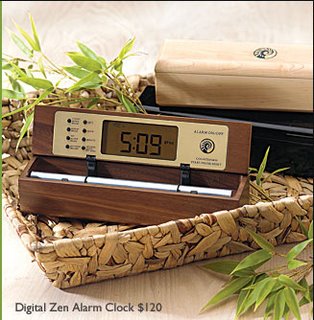 Yoga Timers with gentle chimes Now & Zen’s Meditation Timer Store
1638 Pearl Street
Boulder, CO 80302
(800) 779-6383
Posted in Chime Alarm Clocks, Well-being
 take back your day and nights We can chalk up the national time crunch, in part, to living in a stunningly fast-paced society, a place dedicated to the prevailing ethos of “do more, faster.” We can’t change this reality — at least not single-handedly, or overnight. But even in the context of these constraints, say experts, we still have the power to take back our time.
It starts by coming to terms with a few indisputable facts: There are 24 hours in a day, we’re human beings (not machines), and we can’t do everything. For many of us, time feels tight simply because we’re trying to wedge too much into it. “That is the paradox,” says the late renowned meditation teacher Eknath Easwaran in his book “Take Your Time: Finding Balance in a Hurried World.” “We hurry faster and faster only to find we have less and less time.” We routinely aim to knock off a mile-long to-do list in a day, and then stay up past midnight squeezing in a workout, reorganizing the linen closet, and marinating the chicken for tomorrow’s dinner with friends.
The mind-set needed to sustain this manic activity is infectious. When we’re caught up in “efficient mode,” anything not on the agenda comes to feel like a guilty pleasure. Watching the autumn leaves fall rather than cleaning the gutters seems unproductive somehow. Rocking back and forth on a porch swing instead of paying the bills feels lazy. In valuing everything by whether it would appear on a to-do list, what we crave (and need) most falls by the wayside.
Taking back time, then, requires reflection, first and foremost. How does the pace of your life make you feel? Happy? Or exhausted and unsatisfied? If the answer is the latter, then perhaps a reevaluation of choices is in order. You’ll always have responsibilities. But beyond the necessities, what can you eliminate? What can you cancel, postpone, or simplify? In the space you create by eliminating one stress-inducing social engagement here and an expendable chore somewhere else, you’ll begin to find your “set point” — that place of work-life balance where you feel you’re getting things done and enjoying deliciously slow and “inefficient” activity. Once you glimpse this state of balance, you may find you become fiercely protective of it. You start measuring everything not by whether you can “check it off ” but by how it affects your set point — and if it brings joy.
For some time experts, consumerism is the elephant in the room as far as the time discussion goes — and it’s the best place for a big-picture shift to begin. Keeping up with the Joneses only makes our time crunch worse — even if we’re reluctant to admit it. No matter where we find ourselves on the economic spectrum, the more we consume — iPods, clothes, furniture, cars — the more money we need to earn; the more we need to earn, the more time we must spend working. We do it to fit in, to be accepted, to feel like we’re “doing well.” Beyond these reasons, though, there’s the simple (though short-lived) thrill of material acquisition.
 awareness, stillness of mind There’s good news to be found in the conspicuous consumption, though. Our deeper desires often shine through. “So often, people aspire to buy large-ticket items that symbolize what they really want in their life, which is time,” says Nancy Parkes, professor of environmental studies at Evergreen State College in Olympia, Washington. “‘I’ll buy a nice boat,’ they’ll say, ‘and then we’ll spend more time together as a family riding around in it. We’ll all bond.'” The same thinking often inspires the second homes and cars that seat eight: I’m just one big purchase away from finally having what I need to connect with family and friends. The problem, says Parkes, is the boat payments turn out to be huge, and the boat gets used very little because we’re too busy working to pay for it.
The solution? Again, awareness. Do we really need to spend our vacation at a five-star Caribbean resort, for instance, or can we spend some quality time closer to home?
In many ways, “slow” doesn’t have a good reputation these days; it sounds slovenly, unmotivated. Doing less and taking your time will feel like swimming against the tide. To make the going easier, connect with others on the same path. Plenty of people in your life probably share your sense of time pressure, so don’t hesitate to initiate the conversation: Ask your book-group friends or your walking partners how they manage their time — and freely share your own triumphs and frustrations.
adapted from Body + Soul, October 2006 by Jennifer Barrett
 quality of though, stillness of being Now & Zen’s Alarm Clock Store
1638 Pearl Street
Boulder, CO 80302
(800) 779-6383
Posted in intention
 mindfullness meditation Put it into Practice.
Mindfulness requires concentration, but rather than concentrate on any one object, we concentrate on the moment and whatever is present in that moment.
To begin, take a comfortable seat. Bring attention to your breath by placing your awareness at your belly and feeling it rise and fall. This will help you tune in to the sensorial presence of the body. Once you
feel settled, widen your awareness to include all the sensations in your body as well as any thoughts or feelings.
Imagine yourself as a mountain. Some thoughts and feelings will be stormy, with thunder, lightning, and strong winds. Some will be like fog or dark, ominous clouds. Inhaling, note “mountain.” Exhaling, note “stable.” Use the breath to focus on the present moment; cultivate the ability to weather the storm. If you find yourself swept up in
a thought or emotion, notice it and simply return to the breath. The key is to pay attention to the ever-changing process of thinking rather than to the contents of your thoughts. As you begin to see that they are indeed just thoughts, they will begin to lose their power. You will no longer believe everything you think! Set your Zen Timer with Chime for 20 minutes. Continue to watch and become mindful of your thoughts, feelings, and sensations for 5 to 20 minutes. Set your Zen Timepiece (a Singing Bowl Meditation Timer) for 20 minutes to help you end your practice.
Our Singing Bowl Meditation Timer called the Zen Timepiece has an acoustic 6-inch brass bowl-gong – it is the world’s ultimate alarm clock, practice timer, and “mindfulness bell.”
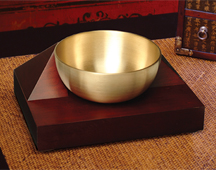 Cherry Singing Bowl Meditation Timer & Alarm Clocks adapted from Yoga Journal, By Frank Jude Boccio
 quality of though, stillness of being Now & Zen’s Singing Bowl Meditation Timer & Clock Store
1638 Pearl Street
Boulder, CO 80302
(800) 779-6383
Posted in intention
 Meditation Using a magnetic resonance imaging (MRI) machine, Eileen Luders, a re-searcher in the Department of Neurology at the University of California Los Angeles School of Medicine, looks for evidence that meditation changes the physical structure of the brain. Until recently, this idea would have seemed absurd. “Scientists used to believe that the brain reaches its peak in adulthood and doesn’t change—until it starts to decrease in late adulthood,” Luders says. “Today we know that everything we do, and every experience we have, actually changes the brain.” Indeed, Luders finds several differences between the brains of meditators and nonmeditators. In a study published in the journal NeuroImage in 2009, Luders and her colleagues compared the brains of 22 meditators and 22 age-matched nonmeditators and found that the meditators (who practiced a wide range of traditions and had between 5 and 46 years of meditation experience) had more gray matter in re-gions of the brain that are important for attention, emotion regulation, and mental flexibility. Increased gray matter typically makes an area of the brain more efficient or powerful at processing information. Luders believes that the increased gray matter in the meditators’ brains should make them better at controlling their attention, managing their emotions, and making mindful choices.
Why are there differences between the brains of meditators and nonmeditators? It’s a simple matter of training. Neuroscientists now know that the brain you have today is, in part, a reflection of the demands you have placed on it. People learning to juggle, for example, develop more connections in areas of the brain that anticipate moving objects. Medical students undergoing periods of intense learning show similar changes in the hippocampus, an area of the brain important for memory. And mathematicians have more gray matter in regions important for arithmetic and spatial reasoning.
 Meditation Timers and Alarm Clocks - Boulder, CO More and more neuroscientists, like Luders, have started to think that learning to meditate is no different from learning mental skills such as music or math. Like anything else that requires practice, meditation is a training program for the brain. “Regular use may strengthen the connections between neurons and can also make new connections,” Luders explains. “These tiny changes, in thousands of connections, can lead to visible changes in the structure of the brain.” Those structural changes, in turn, create a brain that is better at doing whatever you’ve asked it to do. Musicians’ brains could get better at analyzing and creating music. Mathematicians’ brains may get better at solving problems. What do meditators’ brains get better at doing? This is where it gets interesting: It depends on what kind of meditation they do.
Over the past decade, researchers have found that if you practice focusing attention on your breath or a mantra, the brain will restructure itself to make concentration easier. If you practice calm acceptance during meditation, you will develop a brain that is more resilient to stress. And if you meditate while cultivating feelings of love and compassion, your brain will develop in such a way that you spontaneously feel more connected to others.
Improve Your Attention
New research shows that meditation can help you improve your ability to concentrate in two ways. First, it can make you better at focusing on something specific while ignoring distractions. Second, it can make you more capable of noticing what is happening around you, giving you a fuller perspective on the present moment.
Some of the most fascinating research on how meditation affects attention is being conducted by Antoine Lutz, PhD, an associate scientist at the Waisman Laboratory for Brain Imaging and Behavior at the University of Wisconsin at Madison, in collaboration with Richard Davidson and the Laboratory for Affective Neuroscience at the University of Wisconsin. Their work has shown that concentration meditation, in which the meditator focuses complete attention on one thing, such as counting the breath or gazing at an object, activates regions of the brain that are critical for controlling attention. This is true even among novice meditators who receive only brief training. Experienced meditators show even stronger activation in these regions. This you would expect, if meditation trains the brain to pay attention. But extremely experienced meditators (who have more than 44,000 hours of meditation practice) show less activation in these regions, even though their performance on attention tasks is better. The explanation for this, in Lutz’s view, is that the meditation training can eventually help reduce the effort it takes to focus your attention. “This would be consistent with traditional accounts of progress in meditation practice. Sustaining focus becomes effortless,” Lutz says. This suggests that people can immediately enhance concentration by learning a simple meditation technique, and that practice creates even more progress.
The researchers also looked at whether vipassana meditation training can improve overall attention. (Vipassana means “to see things as they really are,” and the meditation techniques are designed to increase focus, awareness, and insight.) Researchers label our inability to notice things in our environment as “attentional blink.” Most of us experience this throughout the day, when we become so caught up in our own thoughts that we miss what a friend says to us and have to ask her to repeat it. A more dramatic example would be a car accident caused by your thinking about a conversation you just had and not noticing that the car in front of you has stopped. If you were able to reduce your attentional blink, it would mean a more accurate and complete perception of reality—you would notice more and miss less.
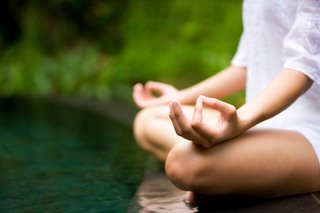 Time Your Meditation With A Zen Timepiece with Tibetan Singing Bowl To test whether meditation reduces attentional blink, participants had to notice two things occurring in rapid succession, less than a second apart. The findings, published in PLoS Biology, reveal that the meditation training improved the participants’ ability to notice both changes, with no loss in accuracy.
What explained this improvement? EEG recordings—which track patterns of electrical activity in the brain, showing precise moment-by-moment fluctuations in brain activation—showed that the participants allocated fewer brain resources to the task of noticing each target. In fact, the meditators spent less mental energy no-ticing the first target, which freed up mental bandwidth for noticing what came next. Paying attention literally became easier for the brain.
As a result, Lutz and his colleagues be-lieve that meditation may increase our control over our limited brain resources. To anyone who knows what it’s like to feel scattered or overwhelmed, this is an ap-pealing benefit indeed. Even though your attention is a limited resource, you can learn to do more with the mental energy you already have.
Our Zen Timepiece’s acoustic 6-inch brass bowl-gong clock is the world’s ultimate alarm clock, practice timer, and “mindfulness bell.” It fills your environment with beautifully complex tones whenever it strikes. In the morning, its exquisite sounds summon your consciousness into awakening with a series of subtle gongs that provide an elegant beginning to your day. Once you experience the Zen Timepiece’s progressive awakening, you’ll never want to wake up any other way. It also serves as the perfect meditation timer.
adapted from Yoga Journal, by Kelly McGonigal
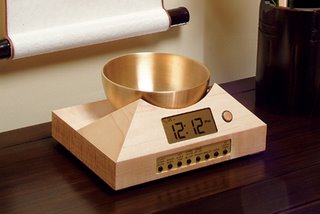 - Meditation Timers and Gentle Alarm Clocks
Now & Zen’s Meditation Timer Shop
1638 Pearl Street
Boulder, CO 80302
(800) 779-6383
Posted in intention, Meditation Timers, Meditation Tools, mindfulness practice, Now & Zen Alarm Clocks, zen, Zen Timers
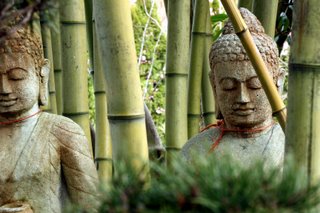 listening to the pause To feel the meaning that exists in all of life’s moments, read a poem.
There is great wisdom within the space of a pause. Even in the simplest sentence, a pause conveys an unspoken message that can change or strengthen the meaning of the words.
Do you remember learning to read? First, you could recognize letters. Before you knew it, you could read words, and then sentences. Perhaps one of your first books, like mine, began with the sentence “See Spot run.” In learning that Spot was the name of a dog, I had a glimmer of realization that a word could
signify more than just an object in the world, that words link the reader to memories, associations, and feelings. For example, one of my classmates was afraid of dogs, so when it was her turn to read aloud, she added a pause: “See Spot. Run!” In that brief pause, her feelings were revealed.
Centuries ago, great poet-saints and sages like Lalla, Hafiz, Rumi, St. Francis of Assisi, and St. Theresa of Avila wrote songs and poems that expressed meaning through pauses, conveying their experiences of transcendence. Their words are like constellations, bright points that link up and form meaning in the open space, inspiring wonder and
awe. Think of the Big Dipper and the infinite night sky that allows us to make out the constellation’s shape. Truth is expressed in the gaps between words and lines. Reading and memorizing ancient sacred texts and poems is a part of my yoga practice. Eternal wisdom shines through the pure words of the sages directly into our own hearts. Infinite knowing seems to tumble seamlessly into our awareness in the same way it does when we gaze up at the stars. In that moment, clear understanding and vision slip in—a state of clarity that is beyond words—and we are held in and understand the greatness of all.
Explore the pauses and open spaces in your own life and rest your mind there, even if only for a few moments. If you have a meditation practice, try pausing before and after you sit. In your asana practice, observe the brief pauses between each movement. During daily activities like preparing dinner, take a moment to notice the spaces around you.
Or try memorizing a sacred poem. Read it out loud first, noticing the pauses, with the support of the breath to make them audible. Then silently repeat the poem to yourself, every day, to learn to feel the hidden pauses that shape your life as surely as they do sentences and constellations.
Meaning and form shine through these invisible connectors. They are there between every inhalation and exhalation, before sneezing, before movement, before every thought, everywhere. Wherever you are, eternal truth is there to speak to you through the poetic pauses. And with each pause, you recover a little more under‑
standing of your true Self.
Kate Vogt has studied classical yoga for many
years with Georg Feuerstein and A.G. and Indra Mohan. She teaches asana, meditation, and the Yoga Sutra in the San Francisco Bay Area and is co-editor of Mala of the Heart: 108 Sacred Poems.
adapted from Yoga Journal, by Kate Vogt
 Gong Wake Up Clock with Tibetan Bowl Now & Zen’s Alarm Clock Store
1638 Pearl Street
Boulder, CO 80302
(800) 779-6383
Posted in intention
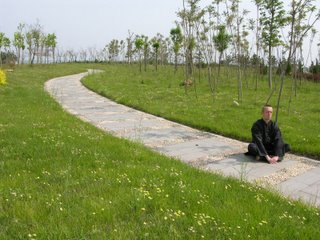 downtime I’m not great with downtime. In line at the post office, I whip out my cell phone and delete old text messages. When I’m stopped at a light, I retrieve a cloth from the glove compartment and dust the dashboard.
At home, I try to snuggle with my pug and relax, but I can’t. I get up to unload the dishwasher, check my e-mail, sort socks, or get a jump on tomorrow’s research and writing. Clearly, I feel better ticking items off my to-do list. The question is: Would I be better off just letting my mind drift?
Truth is, the urge to occupy idle time is tough to fight. We’re a nation of doers, after all: bustling workaholics who have a hard time sitting still (unless it’s in front of the TV). As much as we try to crowd it out, however, experts tell us that boredom is an essential part of the human experience. It’s a counterbalance to all that busyness. In fact, some argue it’s a gateway to peace.
“Create space in your life,” says Body+Soul life coach Cheryl Richardson, “and you’ll find serenity and inspiration on the other side.”
If a little thumb-twiddling can truly lead to better things, why do many of us so desperately avoid it? To demystify our aversion to idleness, we asked Richardson and psychotherapist Richard Winter, M.D., to explain what’s fueling our discomfort with those frightfully unscheduled moments. Here, they share the top three reasons we’re so down on downtime, as well as offer up ways to embrace it — and find deeper satisfaction in the everyday.
We’re Overstimulated
Remember when the doctor’s waiting room was just that — a place to sit, with nothing to do but wait? Now, with TV screens popping up in medical offices, taxicabs, elevators, and even the checkout line (not to mention the lure of your cell phone, iPod, and BlackBerry), every spare moment provides another opportunity for stimulation. As a result, the empty pockets of time we once took for granted have vanished.
 schedule downtime The problem with overstimulation, says Winter, author of “Still Bored in a Culture of Entertainment,” is it creates a “psychological callus” that hardens over time and can eventually keep us from responding with depth to anything or anyone. “Because we can’t discriminate between so many options, we completely shut down our attention to almost everything.”
That, he argues, essentially leaves us feeling passive and craving temporary relief from boredom. Worse, we end up with no time to reflect on our lives, making it harder to forge meaningful connections with the people around us.
Find joy in the humdrum. Recharge your inner resources by reacquainting yourself with quiet. This can prove surprisingly hard if you’re used to nonstop stimulation, so aim for specific actions. Turn off the TV after a certain time each evening. Drive one way of your commute without listening to NPR.
Better still, take a calming walk three nights a week after dinner — and leave the iPod home. The physical activity will satisfy your need to do something, all while energizing you in a way that watching Law & Order can’t. By welcoming a little idle time and its attendant reflection, says Winter, you’ll soon come to “delight in the ordinary again.”
adapted from Body + Soul October 2008
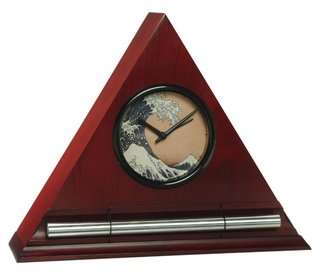 Zen Clock for Timing your downtime with a gentle chime Now & Zen’s Alarm Clock Shop
1638 Pearl Street
Boulder, CO 80302
(800) 779-6383
Posted in intention, Meditation Timers, Meditation Tools, mindfulness practice, nature, Now & Zen Alarm Clocks, Walking Meditation, Well-being, Zen Timepiece by Now & Zen, Zen Timers
 how to have get more energy When it comes to cultivating energy, you probably never did it better than when you were a toddler. You’d come barreling out of bed in the morning, eyes wide and arms full of toys. These days, you’re lucky if you can rouse yourself with multiple alarm clocks and a few cups of coffee. Snacks, if you have time to eat them, aren’t the healthy kind. As for naps and early bedtimes, they happen on rare, unplanned occasions, usually when you’re down with a cold or flu, or exhausted from running yourself ragged all week. With habits like these, it’s no wonder that more than one-third of Americans say they’re so tired that it interferes with work.
Depleted energy interferes with our lives. Feeling energetic “means having the vitality to do the things you want to do,” says Mark Hyman, M.D., editor-in-chief of the journal Alternative Therapies in Health and Medicine and author of “UltraMetabolism.” That vitality isn’t just a state of mind — it’s a physical condition. Each of our cells contains hundreds of mitochondria, tiny “power plants” that combine the oxygen we breathe with the food we eat and then burn the combination to create energy.
 increase vitality with a mindfulness practice We know this process as metabolism. How energetic we feel largely depends on how well our mitochondria are functioning. To function optimally, they need quality fuel: a wholesome, varied diet, restorative sleep, and plenty of oxygen from regular exercise. But rather than enhance our vitality, we often sabotage it with “counterfeit energy” — stimulants like caffeine that we think give us more pep but only drain our energy in the long run.
Getting your energy back is possible. Start by simply looking at your day. From morning until night, energy leaks abound. These daily habits may seem perfectly innocent, but over time they impair your body’s vitality.
Waking up in the morning should be as pleasant as falling asleep at night. The Zen Alarm Clock’s gradual, gentle awakening is transformative.
The Walnut Digital Zen Clock’s long-resonating Tibetan bell-like chime makes waking up a beautiful experience – its progressive chimes begin your day with grace. When the clock’s alarm is triggered, the acoustic chime bar is struck just once … 3-1/2 minutes later it strikes again … chime strikes become more frequent over 10 minutes … eventually striking every 5 seconds until shut off. As they become more frequent, the gentle chimes will always wake you up – your body really doesn’t need to be awakened harshly, with a Zen Clock you’re awakened more gradually and thus more naturally. Unlike artificial recorded sounds coming out of a tiny speaker in a plastic box, natural acoustic sounds transform your bedroom or office environment.
adapted from Body + Soul, September 2006
 gentle wake up clock with chime
Now & Zen’s Chime Alarm Clock Store
1638 Pearl Street
Boulder, CO 80302
(800) 779-6383
Posted in intention, Meditation Timers, Meditation Tools, mindfulness practice, sleep, Sleep Habits, wake up alarm clock, Well-being
 can yoga help you fall asleep? If you’re one of the millions of sleep-starved Americans with a dwindling supply of fence-jumping sheep, try introducing a few Downward Dogs to your bedtime menagerie. A recent clinical study at Boston’s Brigham and Women’s Hospital confirmed that bedtime yoga can help chronic insomniacs significantly reduce their tossing-and-turning time.
The results are most likely linked to yoga’s soothing effect on the central nervous system, says lead study author Sat Bir Khalsa, Ph.D., assistant professor at Harvard Medical School. In insomniacs, levels of the stress hormone cortisol are elevated,” he explains. Yoga can reduce cortisol levels, which is why you have that feeling of calm after practicing it.” And while the study’s poses were selected for their sleep-promoting effects (see below for instructions), Khalsa says most types of yoga, practiced regularly at any time of day, should bring on more nighttime ZZZs. Sleep-promoting yogic breathing exercises
 yoga exercises for insomnia Exercise 1
Sit with a straight spine, with your head erect and chin lightly tucked in. Extend both arms up to form a 60-degree angle (almost vertical), with wrists straight and palms and fingers extended flat and facing up. Keep elbows straight. Begin slow deep breathing through the nose. As you inhale, let your abdomen extend out as though it were being filled with air. As the inhale continues, let your chest expand. At the end of the inhale, pause briefly with your breath suspended; do not to lock your throat to hold the breath, but rather suspend the breath by lifting and suspending the motion of the chest. As you start to exhale, let the chest contract first. As the exhale continues, pull in your abdomen slightly as though it were being emptied of air. Pause briefly at the end of the exhale before beginning the next inhale. The breath rate should be four breaths per minute or slower (15 seconds or longer for each complete inhale/exhale). It is important that this breath, as with all of the breathing in these exercises, is done through the nose. Keep your eyes closed during this exercise, and focus your mental attention on the flow of the breath. Continue for 2 to 3 minutes using your zen timer in repeat mode. At the end, inhale deeply and hold for 10 seconds. Exhale, and let your breath relax as you keep your mental focus on the flow of the breath for about 1 minute with eyes closed.
 Yoga Timer & Chime Alarm Clock by Now & Zen, Inc. - Boulder, CO Exercise 2
Sit with a straight spine, with your head erect and chin lightly tucked in. Extend the arms out to the sides parallel to the ground. Bend the wrists with the fingers pointing straight up. (Your hands look like you’re pressing out toward two walls.) Begin slow deep breathing as described in Exercise 1. Continue for 2 to 3 minutes. At the end, inhale deeply and hold for 10 seconds. Exhale, and let your breath relax as you keep your mental focus on the flow of the breath for about 1 minute with eyes closed.
The Digital Zen Clock serves as a countdown and interval timer for yoga, meditation, bodywork, etc.; and it can also be set to chime on the hour as a tool for “mindfulness.”
 yoga for better sleep Exercise 3
Sit with a straight spine, with the head erect and the chin lightly tucked in. Press the palms together in front of the chest. The fingers of the right hand fingers go over the side of the left index finger and onto the back of the left hand. It is a “cross-lock” with the fingers crossing each other at 90 degrees. Squeeze the hands toward each other with continuous pressure. Begin slow deep breathing as described in Exercise 1. Continue for 2-3 minutes. At the end, inhale deeply and hold with a final push together of the hands for 10 seconds. Exhale, and let your breath relax as you keep your mental focus on the flow of the breath for about 1 minute with eyes closed.
Exercise 4
Sit with a straight spine, with your head erect and chin lightly tucked in. Place your hands in your lap, palms facing up, right hand over the left. The thumb tips touch and point forward. Keep the eyelids half closed. Look downward past the tip of your nose. Inhale in four equal segments through the nose. Mentally recite the sound scale, “Sah Tah Nah Mah”, with one syllable for each stroke of the breath. Then hold the breath by lifting and suspending the motion of the chest. As you hold the breath, mentally repeat the scale four times, for a total of 16 beats. Then exhale in two equal and powerful strokes out the nose. Mentally recite “Wah-Hay” on the first segment out, and “Goo-Roo” on the second stroke out. Continue for 5 to 31 minutes. At the end, inhale deeply and hold for 10 seconds. Exhale, and let your breath relax as you keep your mental focus on the flow of the breath for a few minutes. If you wake up in the night and have trouble falling back asleep, do this exercise for 5 to 11 minutes.
adapted from Body + Soul, April/May 2007
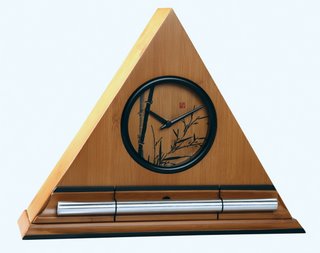 Bamboo Zen Clocks, progressive chime clock and timer for yoga Now & Zen’s Yoga Time & Chime Alarm Clock Shop
1638 Pearl Street
Boulder, CO 80302
(800) 779-6383
Posted in Insomnia, intention, Meditation Timers, mindfulness practice, sleep, Sleep Habits, Well-being, yoga, Yoga Timer, Yoga Timers by Now & Zen
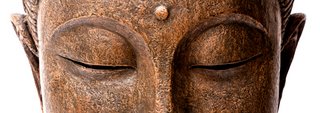 Unwind Do you need to relax? Try these three simple ways to unwind.
Take 10
Spending a few minutes alone each day allows you to assess how tired and stressed you are — information you can then use to plan the rest of the day. “We need little bits of privacy to be able to connect to our inner selves,” says Powers. Set you Chime Timer & Clock by going to the Countdown timer and programming it for 10 minutes. The Digital Zen Chime Timer & Clock’s long-resonating Tibetan bell-like chime makes ending your meditation a beautiful experience – its progressive chimes relax and rejuvenate you.
Find Nature
Take a walk in the park, or even tend to your houseplants. As Powers explains, “Spending time with the natural world nourishes your entire body.”
Be Kind
When you do experience emotional upsets, be gentle with yourself. Show compassion by giving yourself room to breathe, perhaps repeating a calming affirmation.
adapted from Body + Soul, November/December 2007
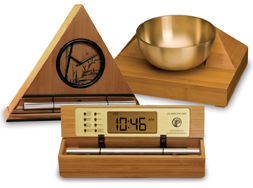 Chime Timers & Alarm Clocks by Now & Zen - Boulder, CO 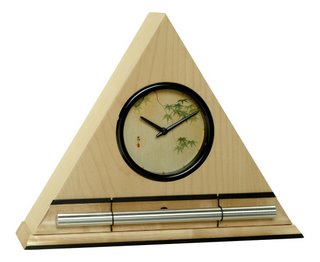 Zen Alarm Clock for Unwinding Now & Zen’s Chime Timer & Clock Shop
1638 Pearl Street
Boulder, CO 80302
(800) 779-6383
Posted in intention
 The Dream-Health Connection Physicians in early Egypt and ancient Greece encouraged people to recall their dreams when seeking medical advice. Mexican and Native American shamans have long considered dream interpretation important for both healing and spiritual awareness. Tibetan medicine views dream work as a path to self-discovery, an awareness that can help create an inner balance — and inner balance contributes to good health.
The Dream-Health Connection
Indeed, the study of dreams in relation to health is gaining acceptance in the scientific community. One study reveals that the role of REM sleep and noting dream variables may be significant in helping patients gain quicker remission from marital separation-related depression (Psychiatry Research, 1998, vol. 80). Other research finds that dream content reflects waking life stressors in people with insomnia. Several studies tracked cancer patients’ dream series and reported that their dreams may have pointed to early cues for the presence of the disease process.
Katherine O’Connell, Ph.D., a clinical psychologist, dream analyst and founder of the Dream Institute in Santa Cruz, Calif., says that “listening to dreams can save your life.” She notes that dreams not only reveal symbols for health issues that need to be resolved, but they often reveal the herbal remedy for the problem — a method of medical dream work that dates back to ancient Egypt and Greece. For example, O’Connell finds that her clients often dream of flowers or herbs that are traditionally used to treat the ailments their physicians diagnose.
In her dream-work journey, O’Connell has studied dream medicine with Tibetan lamas and researched 3,500-year-old Egyptian homeopathic remedies used for dream recall. Through the process, she has also collected more than 5,000 dreams — her own and those of clients — for analysis.
O’Connell believes that viewing your dreams as a series is the best way to understand the complete picture of your physical and psychological health. She suggests writing your dreams down, then reviewing common threads that run through them. “I see dream work as a good mystery story with many chapters,” she says. “With each chapter, we gain more clues along the way.”
Cultivating Dream Awareness
To access the clues in your dreams, start with your knowledge of yourself. While dream symbol books can serve as loose guides, dream interpretation is really an individual matter. For example, the color green may represent money to your spouse but symbolize healing energy to you. Likewise, a spider can be your personal symbol of creativity whereas it may signal a venomous threat to someone else; similar dream images often have different interpretations for different people. So it’s important to tap into your own associations, feelings and intuition about your dream symbols. “We have such innate wisdom. We must remember to trust ourselves,” O’Connell says.
Want to be more in touch with your dreams? ASD offers the following tips:
- Remind yourself to remember your dreams before you fall asleep.
- Keep a pad of paper and pen or tape recorder by your bedside. As you awaken to your chiming Zen Alarm Clock , try to move as little as possible and try not to think right away about your upcoming day. Instead, immediately write down your dreams and dream images, as they can fade quickly if not recorded.
- Influence your dreams by giving yourself pre-sleep suggestions. Before going to bed, write down your agenda. Or say aloud what you want to know to strengthen the conscious-subconscious dream connection.
- Forgo taking alcohol or stimulants such as coffee or caffeinated tea before bed, as these substances interfere with REM sleep. Also, try taking a warm bath with a few drops of chamomile or cedar essential oil (first diluted in a carrier oil such as almond or walnut), or try practicing a few minutes of meditation to clear your mind for restful sleep and clearer dreams. Dreams not only have the potential to enhance your health but, as Jungian analyst Marie-Louise von Franz says, “Dreams show us how to find meaning in our lives, how to fulfill our own destiny and how to realize the greater potential of life within us.”
Sweet dreams.
adapted from Delicious Living, October 2000 by Deborahann Smith
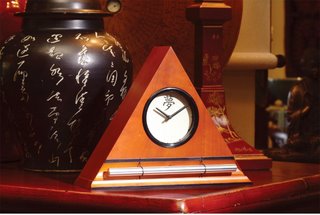 Zen Alarm Clocks with a progressive chime that doesn't interrupt your dreams Now & Zen – The Zen Alarm Clock Shop
1638 Pearl Street
Boulder, CO 80302
(800) 779-6383
Posted in Dreams, Japanese Inspired Zen Clocks, Natural Awakening, sleep, Sleep Habits, Zen Alarm Clock
« Previous Page — « Previous Entries
Next Entries » — Next Page »
|
|
|
|